Yes
| Track | Album |
|---|---|
| Looking Around | Yes |
| Astral Traveller | Time And A Word |
| Roundabout | Fragile |
| South Side Of The Sky | Fragile |
| Heart Of The Sunrise | Fragile |
| Close To The Edge | Close To The Edge |
| Siberian Khatru | Close To The Edge |
| The Revealing Science Of God (Dance Of The Dawn) | Tales From Topographic Oceans |
| Going For The One | Going For The One |
| Tempus Fugit | Drama |

(l to r) Peter Banks, Bill Bruford, Jon Anderson, Chris Squire, Tony Kaye
Contributor: Richard Stokoe
“I start to think about the young kids that start watching us and pick up a guitar, what is their music going to be like in say 10, 12, 14 years? It’s gonna be really cool”. Those were the words of Jon Anderson in 1971. His comments were made whilst being interviewed for a BBC documentary called Sounding Out, and it turned out that he was spot on, although not in the way he might have imagined. A lot of the music between 1981 and 1985 was really cool, and, as he would no doubt have hoped, Yes, the band that he co-founded and wrote most of the songs for, were by 1985 riding the crest of a wave of superstardom and selling records by the shed load. But he might also have hoped that the band’s journey to reaching that point might have been a bit less turbulent. 5 years after those comments a bunch of young kids picked up guitars and the resulting punk rock explosion led to an ultimately cataclysmic dip in the band’s fortunes which lead to Yes calling it a day 5 years later.
Sometime in the late 1990s there was an episode of another BBC TV series entitled Rock Family Trees – the Prog Rock Years. It focused on Emerson Lake & Palmer and Yes, and no other band got a look in, which at the time made perfect sense. Prog had become a four-letter word in the pejorative as well as the literal sense and ELP and Yes epitomised the pretentiousness and excess that would prove to be the downfall of so many successful rock bands who had dared to be progressive. In that episode – narrated by John Peel – Yes guitarist Steve Howe recalls one day being hailed “the band of the people” in the music press, whereas at the onset of punk a year or so later they were written off as has-beens and dinosaurs by the very same writers.
As an 8 or 9-year-old I had adored Rick Wakeman’s Journey To The Centre Of The Earth and whenever I had the chance would listen to it on headphones whilst staring at the photos in the gatefold booklet, imagining what watching a fight between a giant turtle and lizard in what looks like an ocean full of beer might actually be like. However, before too long I was only interested in listening to 3-minute songs about going down the pub or turning Japanese, despite not really knowing what any of it meant. I knew that Rick Wakeman had been in a band called Yes, so they came to represent exactly the sort of music I should be avoiding. When, a few years later, I was getting into neo-prog bands like Marillion and Pallas, I began to raid my older brother’s record collection in an attempt to discover the source, and so my appreciation of the likes of Pink Floyd and Genesis grew. But still I couldn’t bring myself to listen to the one Yes album he owned, Tales From Topographic Oceans.
I’d once bought a copy of the album 90125, released when Yes were a very different band, but it wasn’t until the Rock Family Trees episode was first aired that I began to fully explore their earlier work. I was older, wiser, more open-minded, and of the two bands featured, they seemed the more interesting. For one thing they had once included drumming supremo Bill Bruford in their ranks, together with one of the great voices in popular music, Jon Anderson. And then, of course, there was my old friend Rick, who I was ready to forgive even though he hadn’t really done anything wrong. It was when listening to the much-maligned Tales From Topographic Oceans and quite enjoying it that I realised that there was either something wrong with the way I was wired, or perhaps Yes hadn’t really deserved the level of disparagement aimed at them after all. The predominant criticism of the bands of the classic early seventies Prog era was that they were self-indulgent. It’s hard to argue with that, some really were and became more so as the decade progressed. At times Yes themselves weren’t just close to the edge of over-indulgence, they were standing right on it and staring into the abyss, but on the few occasions that they did fall in it was as if they were attached to a bungee cord and they’d bounce back up again.
To say that choosing a top 10 for a band like Yes is a daunting task is an understatement. It’s like walking through a minefield, but as I do so, rather than flinching with every step for fear of being lambasted for completely ignoring The Yes Album, not reading from the book of Relayer, but then picking a track from the Buggles era, I will proceed safe in the knowledge that I’ve been completely honest, picked my own favourites and that they happen to represent what I believe to be everything that’s good about a band that, through many different line ups, are still going strong well over half a century on from their first rehearsals as Mabel Greer’s Toyshop.
Yes were like a constantly evolving supergroup, known for cherry picking the best available musicians, like the rock band equivalent of the Harlem Globetrotters or Real Madrid. With each new member the level of musicianship increased, and so more became possible: the more talented they became as a collective, the more complicated and ambitious the music they produced. But they had great players from the start; alongside Bill Bruford and bassist Chris Squire were guitarist Peter Banks and keyboard player Tony Kaye, both gifted musicians and there is something about the Hammond organ of the latter that adds a warmth to the music that was perhaps lost over time.
Clearly influenced by the musical climate of the era, in 1969 the band sounded like a supercharged beat group that were genuinely trying to broaden the scope of pop music, striving to make it sound more interesting, and Looking Around – from the self-titled debut LP and also released as the band’s first single – is a good example. Vocal harmonies were at the heart of the band’s sound from the outset, and they are in full flow here. Elsewhere on the debut they are less convincing, but for this track the vocals of Squire, Anderson and Banks soar, like the Byrds taking flight to the Fifth Dimension. On that debut they proved they could groove, with the Hammond driving the track and Kaye adding classical flourishes throughout, a sure sign that the prog credentials were already in place.
A classic and clichéd criticism of progressive rock is that it was all about wizards and dragons. Yes didn’t write about wizards or dragons, at least not that in a way that was obvious. Jon Anderson’s lyrics were notoriously ambiguous and nigh on impossible to decipher, but one thing was clear; he was a dreamer, searching for some kind of Utopian ideal. The Anderson penned Astral Traveller, from second album Time And A Word, is early proof that his mind wasn’t rooted in this world. Sonically the track is like the past co-existing with the future; Peter Banks’ chopped, distorted, bossa-style riff gives the track an untypically hard edge, complimented perfectly by Kaye’s Hammond and Bruford’s primal tom-tom rhythm. The studio version adds a phased treatment to the vocal, probably to make it sound more otherworldly, but if anything it’s just a distraction. There is a better version taken from an early BBC session and although the sound quality isn’t great, the guitar is more abrasive, giving the track an even heavier sound, and Anderson’s voice is unfettered and crystal clear.
By the time of third LP, The Yes Album, in 1970, Steve Howe had replaced Banks on guitar and the compositions immediately became longer and more complex, marking the point at which the band started subtitling the different sections of the longer tracks (none of which I’ll refer to by name to avoid confusion). Howe was and still is an exceptionally dexterous guitarist, and in the world of rock music an early proponent of the ‘why use two notes when fifty will do just as well’ school of playing. It’s testament to the band’s and his own self confidence that during the Sounding Out episode he suggests that a track of the complexity of Yours Is No Disgrace is easy for them to play. The standard of musicianship was bolstered still further by the time of 1971’s Fragile, with keyboard wonderkid Rick Wakeman now on board. It soon became apparent that he was also a talented arranger, able to find ways to weld together the myriad musical ideas and sketches the members bought to the sessions to make a coherent whole. The result was their best album to date and an encapsulation of what many would now consider the classic Yes sound.
Roundabout, an epic melding of progressive rock and funk, scored the band an unlikely hit in the States, despite boasting a 45-second acoustic guitar intro and being a radio-unfriendly eight & a half minutes long. But it’s a track that proved that despite the abundance of new ideas and the musical possibilities their combined talents offered them, there was still a pop heart beating at the core.
The combination of Anderson’s lyrical ambiguity and positivity alongside Wakeman’s alchemical powers of arrangement hit upon a uniquely cerebral yet commercial style that would be repeated sporadically over the coming years, most notably on 1977’s Going For The One.
South Side Of The Sky is one of the band’s heavier moments, with Howe and Squire’s grinding riff and Bruford laying down as solid a foundation as you could wish for from a jazz drummer who supposedly couldn’t play rock. But it is Anderson’s vocal that’s the real star, and proof if ever it was needed that his voice could, when called upon, sound as powerful as it could angelic. Album closer Heart Of The Sunrise, once again deals a hard rock hand, with Squire and Bruford’s blistering rhythmic opening forming a theme that is repeated throughout a track that veers seamlessly from the heavy to the fragile, and includes moments of genuine euphoria that the band had only occasionally hinted at thus far. Clocking in at over ten minutes in length, it also laid the path for the long form masterpiece that would follow.
Picture the scene; Yes are supporting the Kinks on their US tour, but before both of those groups take their turn a lesser known group called the Mahavishnu Orchestra are warming up the audience. Watching from the wings are Messrs Anderson and Squire, and they are open mouthed. Before them stands a guitar maestro called John McLaughlin, the ends of whose arms are a blurred tangle of strings, frets, and fingers. He and his bandmates are treating the audience to a dose of dazzling, mind-frazzling jazz-rock that prompts Anderson to turn to his friend and say, “Chris, we need to start practicing.”
The Mahavishnu’s brand of jazz fusion, and McLaughlin’s playing in particular, would have a big influence on Yes’ next record. In a recent feature in Prog magazine, Anderson explains that his idea for the title track, Close To The Edge, was to have a structure similar to a classical symphony, or more specifically Symphony No.5 by Sibelius, with a wild first movement, gentle second and majestic third, each reflecting a different mood. They succeeded, with the fusion-inspired maelstrom of the opening piece eventually giving way to the pastoral harmonies of the middle section, which in turn leads to a grand, uplifting finale. On first listen the track is a shock to the system, a serene bed of ambience blown apart by a chaotic blast of noise spearheaded by Howe’s improvised guitar solo, with the whole shebang then gatecrashed at random intervals by a choral sting that has no obvious reason to be there. It’s a dizzying, bemusing introduction that soon settles into a passage that would resemble a more straightforward rock song if it weren’t played in such an irregular time signature.
There is always a sense that Yes were trying to achieve a sort of spiritual high with their music, and that is rarely more apparent than for the middle section of Close To The Edge, the vocals of Squire and Howe complemented by Anderson’s repeating of the words ‘I Get Up, I Get Down’, steadily building to Wakeman’s revelatory church organ solo. The grand finale that follows is, as Anderson had hoped, suitably majestic. For the first few listens the track is the audio equivalent of watching a film like Eternal Sunshine Of The Spotless Mind; you’re not really sure what’s going on but on the whole you’re enjoying the experience, and eventually it’ll all make sense. The band and producer Eddy Offord had spent vast amounts of time sweating over how to fit all the sections together to create one coherent, side long piece, but it paid off. Close To The Edge was a triumph.
If anyone was to ask me which track exemplifies Yes at their best, I would point them to Siberian Khatru. The last of the three tracks on Close To The Edge and also the shortest, at a mere eight minutes long, its relative brevity is its greatest strength. It is brimming with ideas, none of which outstay their welcome, and when good enough they are repeated later. It’s also consistent in its structure, with recognisable changes in pace and mood, but they’re never too drastic and any interruptions, such as Wakeman’s madcap harpsichord break, are kept to a minimum. There’s even something resembling a middle eight. Constantly ascending and featuring one of their best vocal hooks, it’s a track in which they achieve the moment of musical ecstasy they always seemed to be aiming for, with the music lifting the vocals to that point with a rousing and joyous crescendo.
Given the critical and commercial success they had enjoyed with Close To The Edge, it might have seemed quite obvious to the band that they could release almost anything their imaginations and musicianship could muster, and it would be well received. Concept albums were the norm by 1973, as were double albums and side long ‘suites’, so why not follow up their best work to date with a double concept album of four 20-minute tracks based upon the teachings of a Hindu yogi named Paramahansa Yogananda? Tales From Topographic Oceans was the band’s Spinal Tap moment, with the outlandish stage sets that accompanied the tour going on to inspire the hilarious scene from the film in which Derek Smalls becomes trapped in a pod – and let’s not forget that in order to give the band the feeling that they were recording in the countryside, the London studio they used for the sessions was decked out with hay bales and a life-sized plastic cow.
It’s a divisive album; some people like it, others think it represents that moment the band slipped over the cliff edge and into that gaping abyss of self-indulgence, eventually tarnishing the name of progressive rock in the process. Personally, I think it’s decent, or at least it is if you disregard sides 3 and 4 and just treat it as a single album. It may lack the drama and grandeur of Close To The Edge, but the magnificently pretentious The Revealing Science Of God (Dance Of The Dawn) is more successful as a long form piece. It ebbs and flows more naturally with its various segments fitting together seamlessly to form a more cohesive whole. Rick Wakeman has famously disowned the album and left the band after its release, but I’m surprised if he doesn’t have at least a modicum of fondness for The Revealing Science, given that his contribution to it is so great. The track opens with a progressively ominous incantation that gives way to one of Wakeman’s best, most simplistic synth riffs, so arresting that it is echoed as a theme throughout. His playing accentuates the various shifting moods, from hope, through tension, reflection and finally celebration. His breaks during the middle section have been much copied over the years, and the solo on 19 minutes is perhaps his finest contribution in a Yes shirt, or cape.
Another key contribution that should get a mention is that of the late Alan White. To have to fill a drum stool so recently vacated by Bill Bruford must have seemed daunting in the extreme, but rather than try to imitate his predecessor’s jazz stylings, he played to his own strengths and throughout the track proves just what a superb rock drummer he was, the fills that accompany Wakeman’s aforementioned solo being particularly worthy of note. His style added a welcome robustness to the band’s sound and, as an introduction to the power and adaptability of his playing, The Revealing Science Of God was the perfect showcase.
Given the complexities of both Tales From Topographic Oceans and its successor, Relayer, their approach to Going For The One was sensible. This was 1977 and the world of popular music was a very different place to the one Yes had last inhabited, so the best option was to simplify; get back to basics and distil the music down to its key elements. They also opted for a change in the style of artwork. Roger Dean’s designs had become such a recognisable part of the Yes package and his images reflected the evocative nature of the music contained within perfectly. However, this time around they chose to employ Storm Thorgerson and Aubrey Powell of Hipgnosis, whose work gave the album a slicker, more contemporary first impression. With Wakeman now back on board the overall result was their most concise album to date. It certainly had a broader commercial appeal, with the album reaching No.1 in the UK and Wondrous Stories earning them a top 10 hit in the singles chart. For the first time since Close To The Edge everything had fallen into place.
From the first few notes you know that things have changed. Going For The One, the opening track, sets off like the theme for a Looney Tunes ‘Yosemite Sam’ cartoon, with Steve Howe’s slide guitar kicking off proceedings, from where the song hits the ground running and doesn’t pause for breath. One familiar aspect to the sound is that quest for the musical high, but the crucial difference with Going for the One it’s that there is no slow build to that point, no change of direction, no meandering, and no grand finale; it’s a celebratory rush from start to finish.
I used to quite like Buggles, so much so that Video Killed The Radio Star became one of the first singles I bought with my own money. But in 1980, one year after that massive hit, when it was announced that Trevor Horn and Geoff Downes would be replacing Jon Anderson and Rick Wakeman in Yes, even I thought it was a mistake. Although I wasn’t yet familiar with the work of Yes, I knew that a pop duo joining a rock band could never work, it just seemed implausible. It would be like Dollar replacing Buckingham and Nicks in Fleetwood Mac, or B.A. Robertson taking over from Ozzy in Sabbath. Unsurprisingly, Yes fans agreed.
Drama, the one album they recorded during that time, does have its moments and if Tempus Fugit had been Horn and Downes one and only contribution to the Yes back catalogue, it would have been time well spent. The track is the perfect amalgam of New Wave energy and simplicity and the vocal highs that have always set Yes’ music apart. Horn had initially been a bass player, but he was also a great singer, with a voice similar enough to Jon Anderson’s to convince Chris Squire to offer him the gig in the first place. In the official video for the track, however, it’s telling that Downes looks entirely comfortable, whereas Horn doesn’t, at times looking around him as if to ask, “how the hell did I end up here and what am I supposed to do with my hands?” It’s unsurprising, therefore, that Downes became a global rock star with his next band, Asia, rejoined Yes in 2011 and is still a member today, whereas Horn stepped out of the limelight, becoming one of the all-time great record producers in the process. Although their tenure in the band had lasted barely a year, Tempus Fugit was the final track on their one and only album, so at least they went out on a high.
Yes split in 1981, only to return again two years later with their biggest selling album to date. In one form or another, and with the occasional hiatus, they have been together ever since and are still releasing new music. On 21st June this year they appeared at the Royal Albert Hall as part of a tour to celebrate the 50th anniversary of the release of Close To The Edge, an album that is still widely considered to be their best, and which they played in its entirety. The performance was exemplary, and at times the audience was visibly moved, but despite the enormity of the occasion, with it being the summer solstice I was still garnering the vague hope that one of the road crew might, at some point, wheel out an undersized model of Stonehenge.
The band were finally inducted into the Rock and Roll Hall of Fame in 2017, a reward for producing a truly impressive body of work over a 50-year period. There have been times when they have had to adapt or die, especially in the mid-seventies, and it is the music they released prior to that, at a time when they were able to express their creativity more freely, that will be most fondly remembered. The personnel may change, with Steve Howe being the only remaining member from the classic early seventies line up, but you get the feeling that there will always be a version of Yes doing the rounds, ensuring that the band’s legacy remains, hewn into the living rock of musical history.

Yes (l to r): Anderson, Wakeman, Bruford, Howe
Richard Stokoe spent his formative years in Oxfordshire safe in the knowledge that quality music began and ended with The Wombles. He forgets how it happened but sometime in the mid-1970s it became apparent that this ‘truth’ proved to be nothing of the sort. In the meantime, and unbeknown to him, his family’s record collections had been quietly shaping his musical tastes, but again his world was turned upside down when, one day in the late 1970s, having heard Hong Kong Garden by Siouxsie & The Banshees on the TV, it transpired that quality music didn’t begin and end with Simon & Garfunkel, Genesis, Stevie Wonder and The Beatles. It is continual revelations such as these that have kept his passion for music alive ever since. He now lives in South London with his wife, cat, and an ever-expanding music collection, which still includes his original Wombles 45s. This is his music website Fuzzed Up and you’ll find him on twitter @RickStokoe
TopperPost #1,033


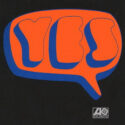
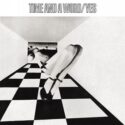
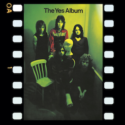

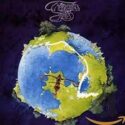
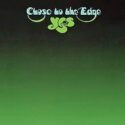
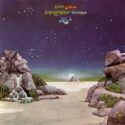
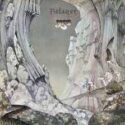
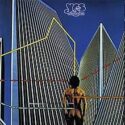

Loved this Toppermost – I’m most familiar with the 80s Yes, and feel it should be pointed out the guitar tone on ‘Owner of a lonely heart’ is highly regarded among guitarists. But I don’t know what would go …
Also, I believe Yes did one of my favourite tour concepts, in which all versions of the band toured, and version one came out, then someone left and his replacement came out, and on and on. No fan disappointed.